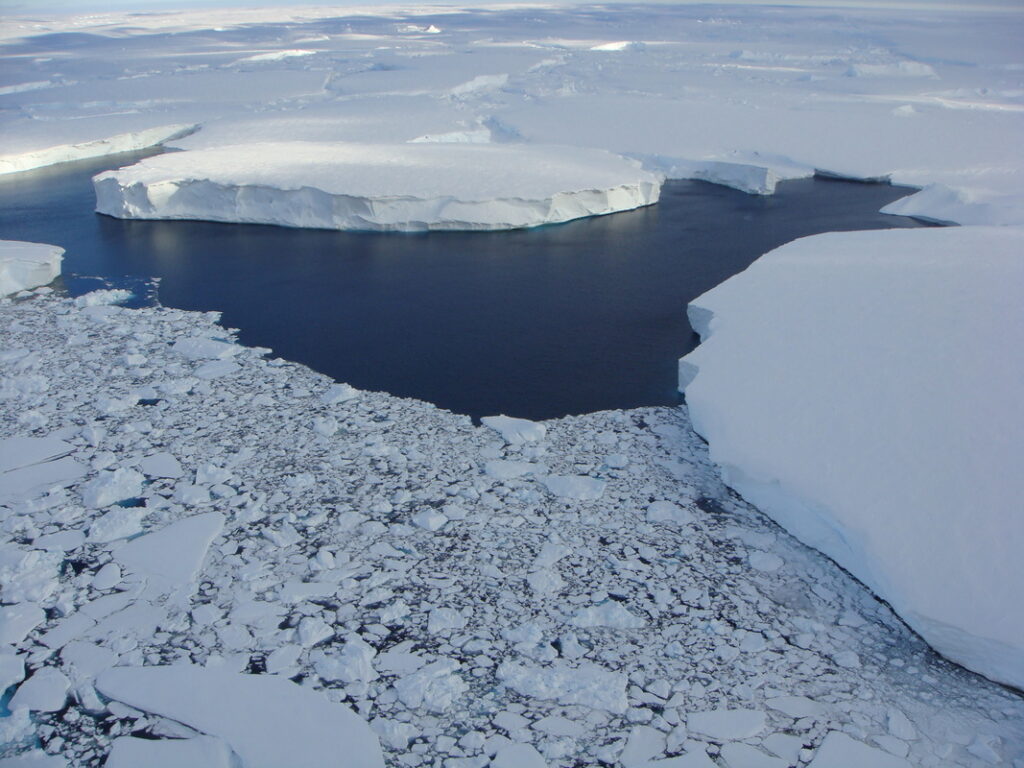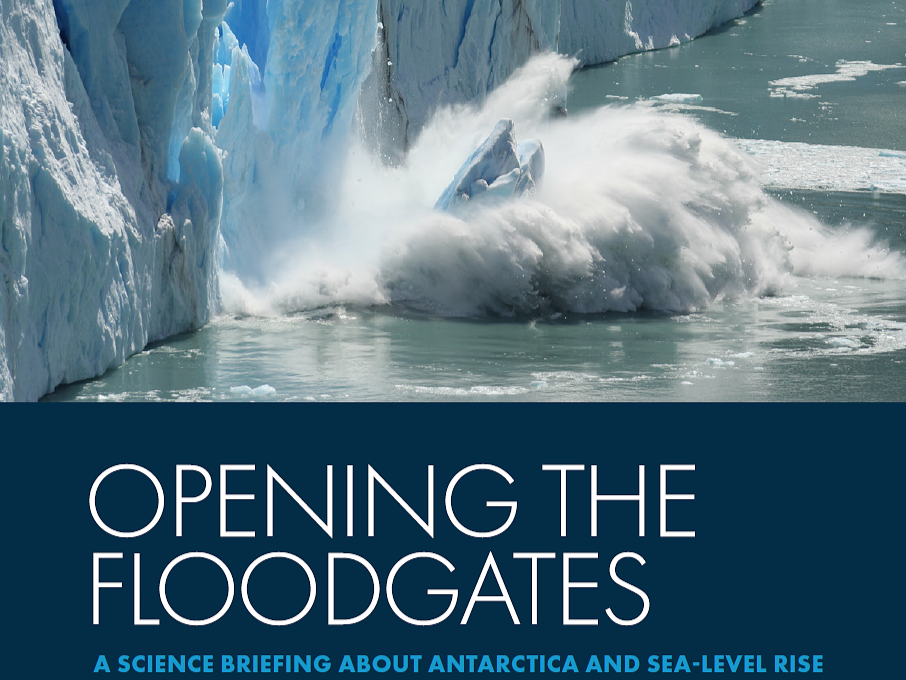Helicopters track warm ocean water melting Totten Glacier ice shelf
11 September 2023
Probes dropped from helicopters through ice cracks help reveal that warm ocean water is melting the largest glacier ice shelf in East Antarctica from below.
With its catchment holding the equivalent ice volume of about 3.5 metres of global sea-level rise, the Totten Glacier is the most rapidly thinning in East Antarctica.
The results of six days of helicopter surveys off the Totten Glacier Ice Shelf during the 61st Japanese Antarctic Research Expedition in 2019 are published today in Geophysical Research Letters.

A co-second author, Dr Pat Wongpan of the Australian Antarctic Program Partnership, said their study was able to investigate a broader area of the continental shelf than previously covered by ships.
“To understand the pathways and mechanisms of warm water inflow, ocean observations across entire continental shelf regions are necessary, but ships are often obstructed by sea ice and icebergs.”
“This study uses probes dropped from helicopters through cracks in landfast ice to measure the temperature and salinity of the ocean to a depth of 1000 metres,” he said.
In total, 74 AXCTD (Airborne eXpendable Conductivity, Temperature, and Depth) and AXBT (Airborne Bathy-Thermograph) probes were deployed. These expendable instruments were launched from a helicopter into ice cracks between 15 and 540 m wide to float on the ocean surface. The floating portion releases a probe, which sinks toward the seabed, and transmits data back to the helicopter.

Intrusions of warm ocean water (0.5–1°C) were found uniformly over a large previously unsampled area of the continental shelf region below 550-600 metres.
Glacial meltwater outflow from the Totten Ice Shelf cavity was also identified, which is direct evidence of the ice shelf melting from beneath.
The authors write that their results “emphasise the capability and effectiveness of helicopter-based oceanographic observations for efficient and broad surveys of Antarctic coastal regions, especially for tracing pathways of ocean heat intrusions toward Antarctic ice shelves.”
Dr Wongpan said that helicopters are unaffected by sea-ice conditions, travel faster than a ship, can conduct measurement through small ice cracks, and are cheaper to operate than an icebreaker.
“By combining ship-based and helicopter-based approaches we may be able to enhance the efficiency of future polar oceanographic observations.”
“This will be crucial for intensifying our research to urgently improve projections of sea level rise,” Dr Wongpan said.

LINKS:
Helicopter-Based Ocean Observations Capture Broad Ocean Heat Intrusions Toward the Totten Ice Shelf, Geophysical Research Letters
A joint analysis of helicopter- and ship-based oceanographic measurements from the 61st Japanese Antarctic Research Expedition (JARE61), Nature Communications



